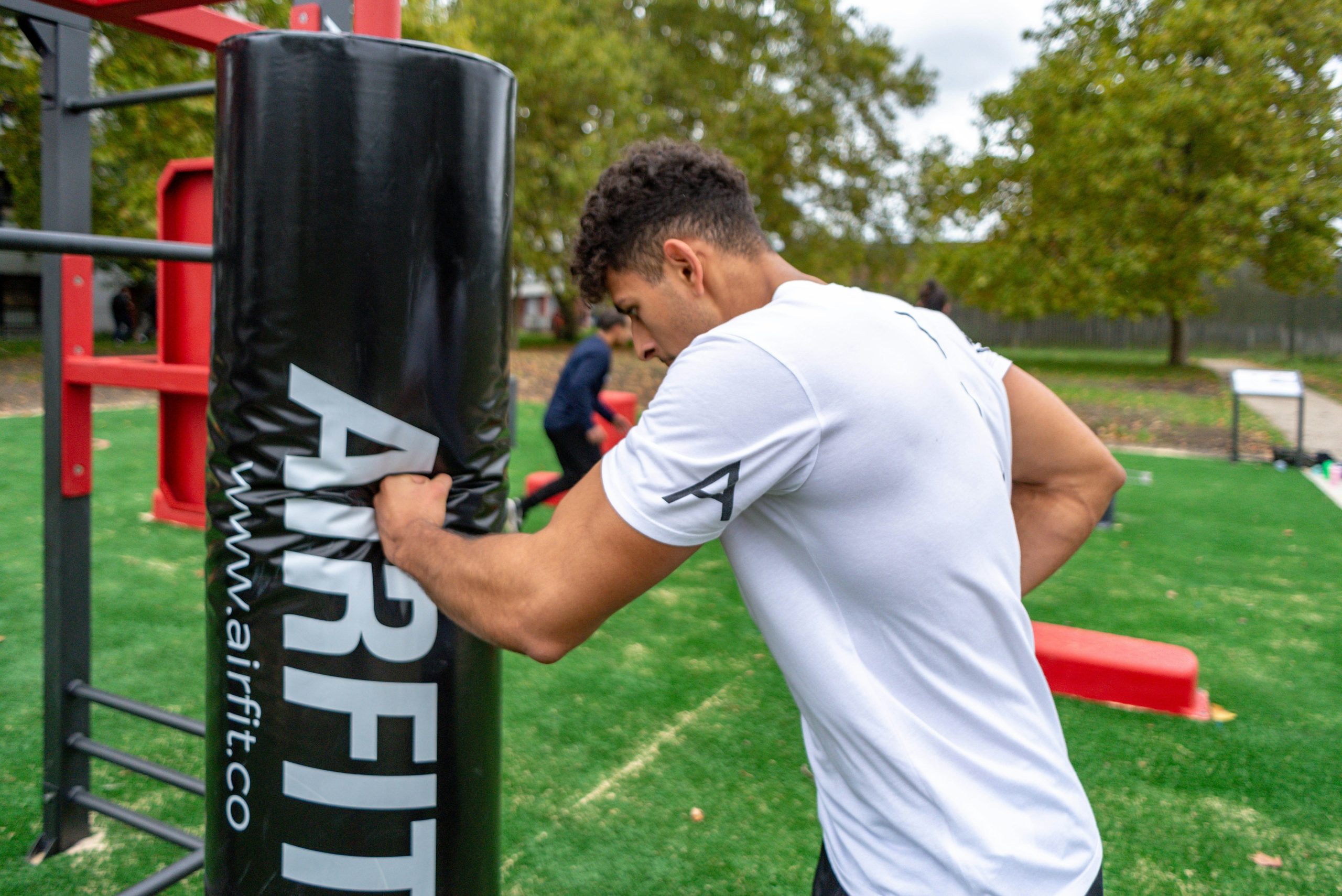Table of Contents
![]()
Building muscle is a key goal for many fitness enthusiasts, and selecting the right exercises can make a significant difference in your results. Whether you prefer bodyweight routines, free weights, or machines, understanding the best exercises for muscle growth and how to use them effectively is crucial. This article provides a comprehensive guide on the best exercises for building muscle, categorized by type and method, to help you create an effective workout regimen.
Bodyweight Exercises
1. Push-ups
Push-ups are a versatile bodyweight exercise that targets the chest, shoulders, and triceps. They can be modified to increase difficulty or focus on different muscle groups. Variations include:
- Standard Push-ups: Hands shoulder-width apart, body in a straight line from head to heels.
- Incline Push-ups: Hands elevated on a bench, easier for beginners.
- Decline Push-ups: Feet elevated, increasing the challenge and emphasizing the upper chest.
Benefits: Push-ups enhance upper body strength, improve core stability, and require no equipment.
2. Pull-ups
Pull-ups primarily target the back, biceps, and shoulders. They can be performed with various grips:
- Overhand Grip: Emphasizes the back and biceps.
- Underhand Grip: Focuses more on the biceps.
- Neutral Grip: Targets both back and biceps equally.
Benefits: Pull-ups build upper body strength, improve grip, and are highly effective for developing a V-shaped back.
3. Squats
Squats are a foundational lower body exercise that engages the quadriceps, hamstrings, glutes, and calves. Types include:
- Bodyweight Squats: Basic form, useful for beginners.
- Goblet Squats: Holding a weight close to the chest for added resistance.
- Pistol Squats: Single-leg squats that increase difficulty and balance.
Benefits: Squats enhance lower body strength, improve mobility, and are functional for daily activities.
4. Planks
Planks are excellent for building core strength and stability. Variations include:
- Standard Plank: Forearms on the ground, body in a straight line.
- Side Plank: Targets the obliques and improves lateral stability.
- Plank with Leg Lift: Adds difficulty and engages the core further.
Benefits: Planks strengthen the core, support better posture, and reduce the risk of back injuries.
Free Weights
1. Bench Press
The bench press is a staple for building chest, triceps, and shoulder strength. Key variations are:
- Flat Bench Press: Targets the middle chest.
- Incline Bench Press: Focuses on the upper chest.
- Decline Bench Press: Emphasizes the lower chest.
Benefits: The bench press enhances upper body strength and muscle mass, allowing for progression in weight and difficulty.
2. Deadlifts
Deadlifts are a compound exercise that works the back, glutes, hamstrings, and core. Variations include:
- Conventional Deadlift: Focuses on the posterior chain.
- Sumo Deadlift: Wider stance targets the inner thighs and glutes.
- Romanian Deadlift: Emphasizes the hamstrings and glutes with a slight bend in the knees.
Benefits: Deadlifts improve overall strength, posture, and functional movement patterns.
3. Squats (Barbell and Dumbbell)
Both barbell and dumbbell squats are effective for building leg strength. Differences include:
- Barbell Squats: Allow for heavier weights and overall muscle engagement.
- Dumbbell Squats: Offer a more varied range of motion and balance challenge.
Benefits: Squats build lower body muscle, improve balance, and enhance functional strength.
4. Shoulder Press
The shoulder press targets the deltoid muscles of the shoulders and can be performed with:
- Dumbbells: Provides a greater range of motion and stabilizer muscle activation.
- Barbells: Allows for heavier loads and progressive overload.
Benefits: The shoulder press builds shoulder strength, improves stability, and enhances upper body muscularity.
Machine Exercises
1. Leg Press
The leg press machine focuses on the quadriceps, hamstrings, and glutes. It offers various foot placements:
- Standard Foot Position: Targets the quadriceps.
- High Foot Position: Emphasizes the glutes and hamstrings.
Benefits: The leg press machine isolates lower body muscles and provides a controlled environment for safe and effective strength training.
2. Lat Pulldown
The lat pulldown machine works the latissimus dorsi, biceps, and shoulders. Variations include:
- Wide Grip: Targets the outer lats and helps create a wider back.
- Close Grip: Focuses more on the inner lats and biceps.
Benefits: The lat pulldown helps develop a V-shaped back and improves upper body strength.
3. Chest Press
The chest press machine isolates the chest, triceps, and shoulders. Adjustments include:
- Incline Chest Press: Focuses on the upper chest.
- Flat Chest Press: Targets the middle chest.
Benefits: The chest press machine allows for controlled movement and muscle isolation, facilitating muscle growth and strength development.
4. Cable Rows
Cable rows target the back, biceps, and shoulders. Variations include:
- Seated Rows: Emphasize the middle back.
- Standing Rows: Engage the core along with the back muscles.
Benefits: Cable rows improve back strength, posture, and provide a constant resistance throughout the movement.
Compound vs. Isolation Exercises
Compound Exercises
Compound exercises involve multiple muscle groups and joints, offering benefits such as:
- Overall Muscle Growth: Engage larger muscle groups and promote hormonal responses.
- Functional Strength: Improve coordination and strength for daily activities.
Examples: Squats, deadlifts, bench press, pull-ups.
Isolation Exercises
Isolation exercises target a specific muscle group, useful for:
- Muscle Definition: Enhance the appearance of individual muscles.
- Injury Rehabilitation: Focus on strengthening specific muscles or joints.
Examples: Bicep curls, tricep extensions, calf raises.
Programming and Progression
Reps and Sets
- Repetitions (Reps): Refers to the number of times you perform an exercise in one set. Typical ranges for muscle building are 6-12 reps.
- Sets: The number of cycles of reps performed. Generally, 3-5 sets per exercise are effective.
Progressive Overload
Progressive overload involves gradually increasing the weight, reps, or intensity of an exercise to continue making gains. Techniques include:
- Increasing Weight: Add more weight to challenge your muscles.
- Adding Reps or Sets: Increase the volume of your workouts.
- Improving Form or Technique: Enhance the quality of your exercises.
Rest and Recovery
Rest is crucial for muscle growth and repair. Strategies include:
- Rest Days: Incorporate rest days in your weekly routine to prevent overtraining.
- Sleep: Aim for 7-9 hours of quality sleep per night.
- Nutrition: Support muscle recovery with a balanced diet rich in protein, healthy fats, and carbohydrates.
Conclusion
Building muscle effectively involves a combination of various exercises tailored to your goals and preferences. Bodyweight exercises, free weights, and machines each offer unique benefits and can be incorporated into a well-rounded workout routine. By understanding and applying the principles of compound and isolation exercises, along with proper programming and progression techniques, you can maximize your muscle-building efforts and achieve your fitness goals.
Share This





Be the first to comment